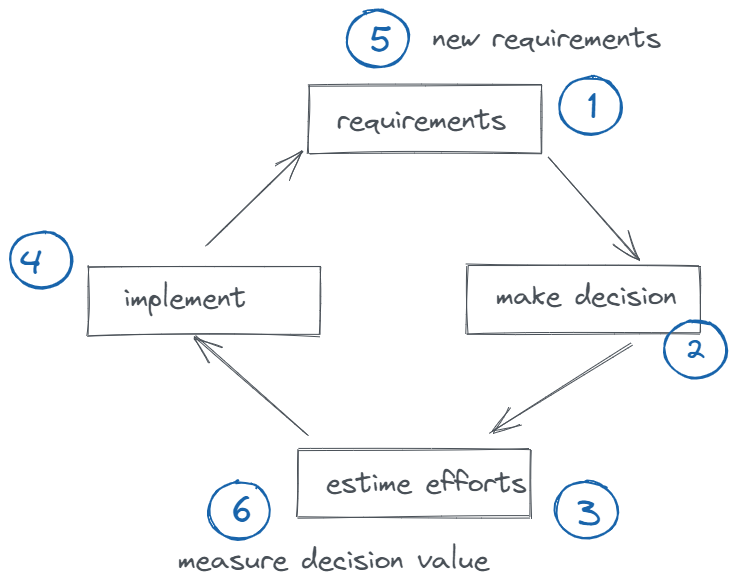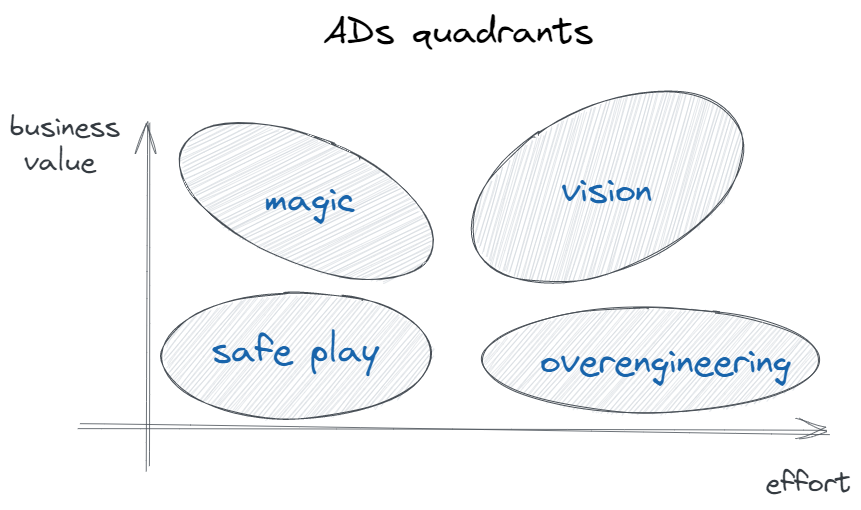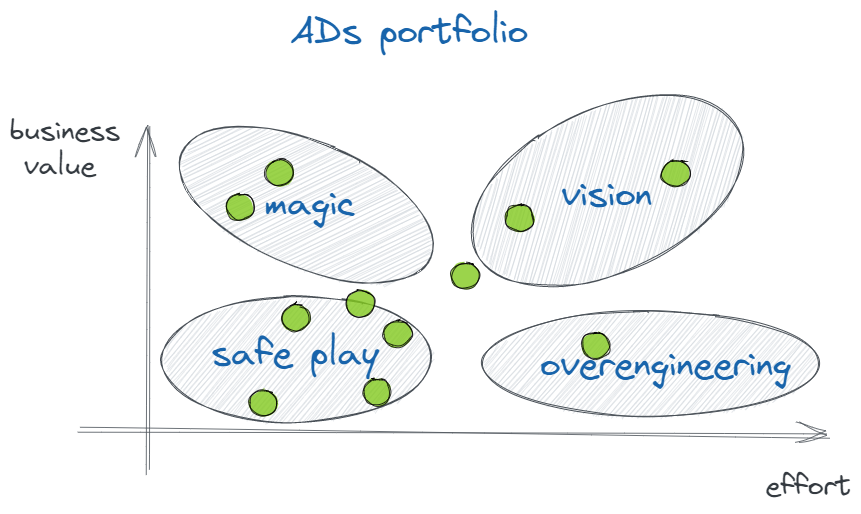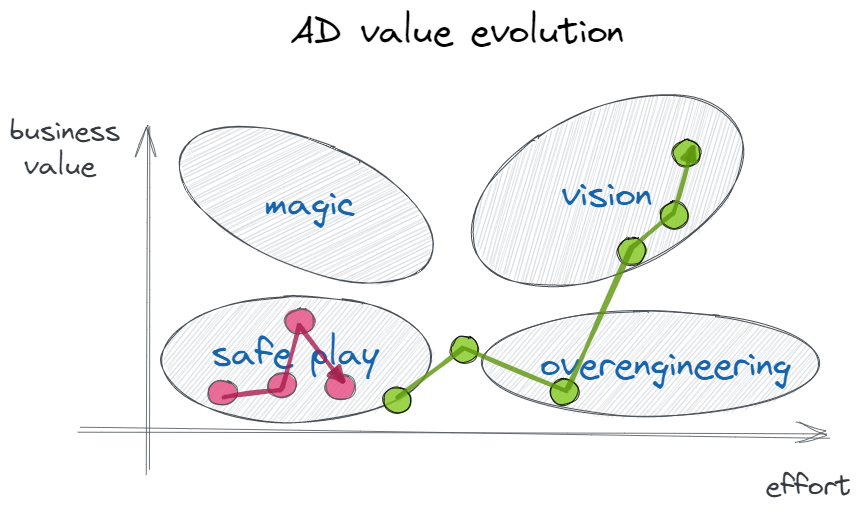What is itPermalink
An architecture decision (AD) is a software design choice that addresses a significant requirement. From here
During project team makes multiple ADs. Each decision is made at some point in time and within specific context - project history, current functional requirements (i.e. set of user stories), set of non-functional requirements, product vision, clients in pipe etc. This context is subject to change in time.
Track itPermalink
ADR is common approach to track AD
Very good example of ADR usage - A Case Study - Konstantin Kudryashov - DDD Europe 2020
Evaluate itPermalink
What does it mean to evaluate AD? When should it be done?

QuadrantsPermalink

MagicPermalink
The art of gathering low hanging fruits. Bringing in some new app, lib, pattern that proved to work in similar domains, but it’s unfamiliar to project team. As an example check article Sql is not everything you need
Safe playPermalink
No pain no gain or agile trap quadrant. How is it an agile trap? All ADs that are made with only looking at current needs of the project. Is it bad – no. But this kind of decision making фззкщфср will probably make you start v2.0 of your app much sooner than expected. Reason - no platform vision in architecture.
VisionPermalink
Hardest one, because it’s easy to fail into overengineering.
OverengineeringPermalink
Nothing is wrong with this quadrant, unless all decisions end up here.
Multiple ADs, not ONEPermalink

Value over timePermalink
Good example is AD from vision quadrant. Rarely you can put all ADs right in that quadrant from the very beginning. Initially these decisions tend to move to overengineering quadrant first, and if team is lucky and persistent, it will eventually move to vision.

StrategyPermalink
Let’s recap
- Safe play is obvious choice for most companies. But that’s mid-term trap.
- To get some magic – networking is an answer, or bringing in some external people with different domain expertise.
- Vision – requires both technical and product components.
Team should work with ADs as with any portfolio using risk-reward estimation approach, i.e. in general, accept some risk of overengineering but manage it.
Managing risk of overengineering means
- mistakes will happen, but they are allowed
- reevaluate AD often
- be transparent and honest with team
GuesstimatePermalink
Do not underestimate element of luck in decision making - team operates with incomplete information in fast changing world.



